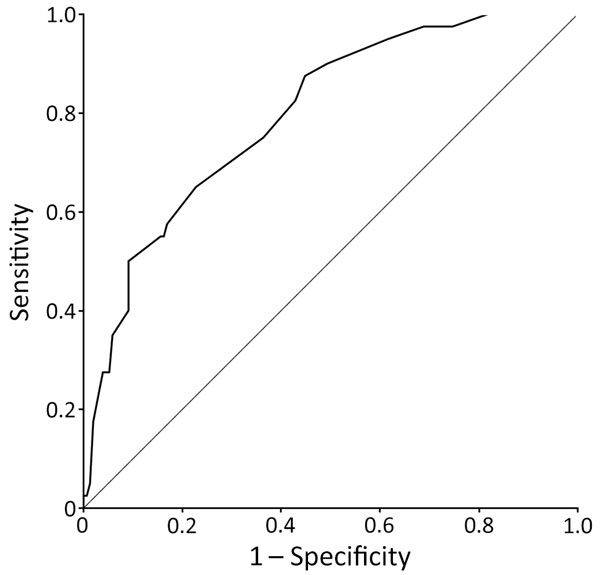Volume 24, Number 6—June 2018
CME ACTIVITY - Research
Bioclinical Test to Predict Nephropathia Epidemica Severity at Hospital Admission
Figure 3

Figure 3. Receiver operating characteristic curve of test to predict development of severe nephropathia epidemica among patients hospitalized for nephropathia epidemica, Ardennes Department, January 2000–December 2014. Severe nephropathia epidemica was defined as the occurrence of >1 of the following criteria: hypovolemic, hemorrhagic, or septic shock; plasma creatinine level >353.6 µmol/L; anuria (urine output <300 mL/d); acute kidney injury or hydroelectrolytic disorders requiring dialysis; hemorrhage requiring blood transfusion; admission to the intensive care unit; or death. Area under the curve is 0.80.
Page created: May 15, 2018
Page updated: May 15, 2018
Page reviewed: May 15, 2018
The conclusions, findings, and opinions expressed by authors contributing to this journal do not necessarily reflect the official position of the U.S. Department of Health and Human Services, the Public Health Service, the Centers for Disease Control and Prevention, or the authors' affiliated institutions. Use of trade names is for identification only and does not imply endorsement by any of the groups named above.